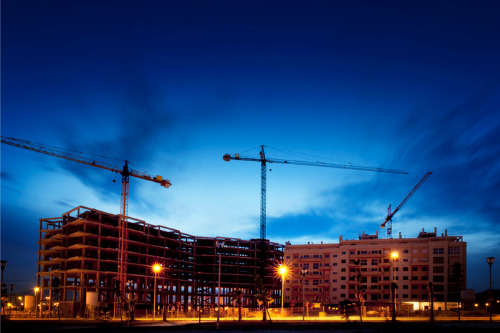

On April 04 in Ontario, many workers in the construction sector hung up their hats as Premier Doug Ford announced that most industrial construction had to stop in the province and no new residential building would be allowed to start, except for necessary infrastructure projects such as for hospitals and transportation that could continue during this time.
Both those projects that have remained open and those that have been shut down face challenges as a result of the order, albeit very different ones.
“We have a lot of residential projects that had already started and they’re going to continue, and a lot of public infrastructure projects are also allowed to continue because it’s bettering the public, but even those projects are going to find changes in supply chain management, getting products delivered to sites, [and acquiring] site materials,” said Steve Schmelzle, leader of RSA’s Construction Centre of Excellence, adding that sub-trades might also have challenges in continuing to operate. Sites that remain open will also have to keep in mind how to ensure their projects are safe to the public.
Nonetheless, the majority of projects have been shutdown, which raises questions around keeping their insurance coverage in place as well as keeping the public safe when project sites are closed.
For the latter, “It comes down to site management, and the site still needs to be protected,” said Schmelzle, advising that insureds continue to monitor sites regularly. Each site manager or foreman has to devise their own plan for the best way to do so because each project is different, so exposures are likewise varied. Some mitigation measures include posting signs that indicate who to contact in the event of an incident, removing combustibility from the site, such as propane, gasoline, and equipment, and deploying temporary heating in case of colder spring weather (which would require oversight).
With rainy weather already upon us, insureds might also want to consider the exposures their sites face due to flooding.
“The number one claim we have in civil construction is flooding from water, and it’s not the traditional rising of water bodies … it’s actually inundation of rain because in today’s weather climate we seem to get less rain storms, but greater bursts when they do happen,” said Schmelzle. “Part of our mitigation measures on a short-term basis is, what has the client done to protect from rain – that’s closing off things like tunnels and shafts, and if you’re doing underground work, removing the equipment from the underground.”
RSA also recognizes that the shutdown in Ontario might be extended, which in turn could impact coverage because standard insurance policy languages for construction give either 30 or 60 days in the event that a project gets shut down for whatever reason where coverage will still continue. RSA continues to provide 30 or 60-day extensions on cessation since the insurer wants to trigger the broker to go back to the insured and revisit their plans for their sites during this time.
“What has continued? Have there been any changes to the measures you’ve taken? Have you had any incidents?” listed Schmelzle. “While some of our competitors have taken a position to almost remove the period of cessation allowance, and saying they’ll keep it open-ended because we don’t know when this is going to end – and that’s certainly a viable option – RSA and other markets have said that we’re going to keep a period in there solely so that we can get periodic updates.”
Other considerations on coverage that brokers can raise with their clients during this time is for them to speak with the owner of the project, who might have taken out an insurance policy as well, and ensure the right measures to keep the insurance in place are being carried out.
“It would be proactive for the broker of the clients who are receiving benefits from the insurance policy, but were not the placer of the insurance policy, to make sure that they’re going to the party, generally the owner, who is the placer to make sure that the coverage is still in force,” said Schmelzle.
Finally, in a time of shutdown, all equipment might be brought back to one location, versus when it’s spread across 10 different project sites in the course of normal operations. Insureds should advise their insurance company of this concentration of values.
“It’s important for your equipment, but it’s even more important for fleet autos because the coverage available for concentration of values is generally lower than for contractors’ equipment,” explained Schmelzle, adding that what’s been done to that equipment when it’s returned is also important, such as if it’s stored indoors or outdoors, or if it’s being maintained or worked on.
Contractors might use this opportunity to do some required maintenance, but the problem with that is a lot of maintenance includes welding or motor work, which in turn could lead to a fire.
“It’s actually better to know that they’re not really doing much to it because a sitting vehicle or a sitting piece of equipment is safer than one that’s being worked on,” said Schmelzle.
